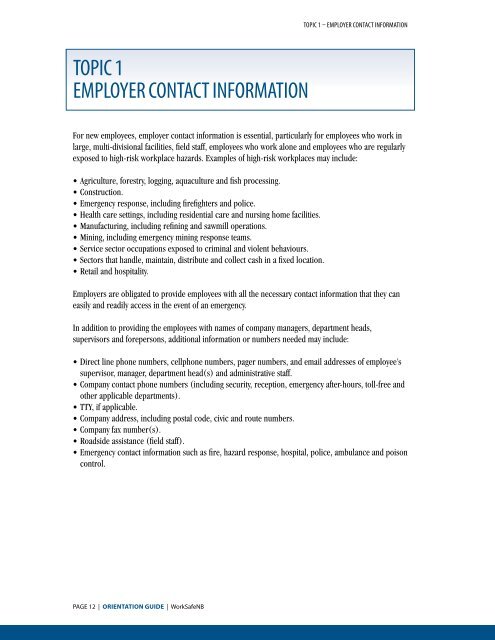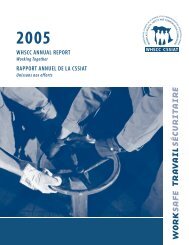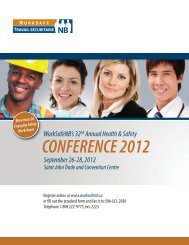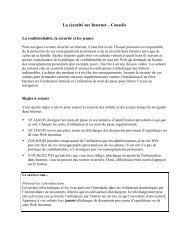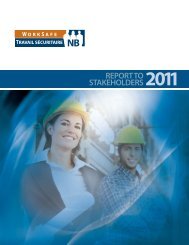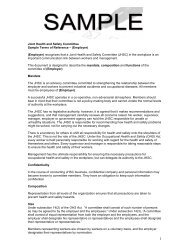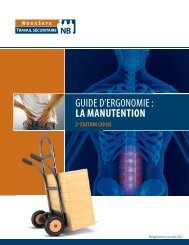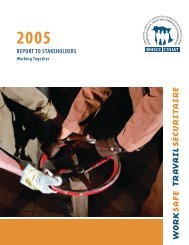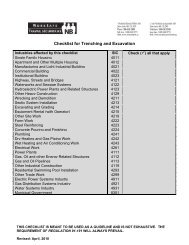HEALTH & SAFETY ORIENTATION GUIDE for ... - WorkSafeNB
HEALTH & SAFETY ORIENTATION GUIDE for ... - WorkSafeNB
HEALTH & SAFETY ORIENTATION GUIDE for ... - WorkSafeNB
- No tags were found...
Create successful ePaper yourself
Turn your PDF publications into a flip-book with our unique Google optimized e-Paper software.
Topic 1 – Employer contact in<strong>for</strong>mationTopic 1Employer Contact In<strong>for</strong>mationFor new employees, employer contact in<strong>for</strong>mation is essential, particularly <strong>for</strong> employees who work inlarge, multi-divisional facilities, field staff, employees who work alone and employees who are regularlyexposed to high-risk workplace hazards. Examples of high-risk workplaces may include:• Agriculture, <strong>for</strong>estry, logging, aquaculture and fish processing.• Construction.• Emergency response, including firefighters and police.• Health care settings, including residential care and nursing home facilities.• Manufacturing, including refining and sawmill operations.• Mining, including emergency mining response teams.• Service sector occupations exposed to criminal and violent behaviours.• Sectors that handle, maintain, distribute and collect cash in a fixed location.• Retail and hospitality.Employers are obligated to provide employees with all the necessary contact in<strong>for</strong>mation that they caneasily and readily access in the event of an emergency.In addition to providing the employees with names of company managers, department heads,supervisors and <strong>for</strong>epersons, additional in<strong>for</strong>mation or numbers needed may include:• Direct line phone numbers, cellphone numbers, pager numbers, and email addresses of employee’ssupervisor, manager, department head(s) and administrative staff.• Company contact phone numbers (including security, reception, emergency after-hours, toll-free andother applicable departments).• TTY, if applicable.• Company address, including postal code, civic and route numbers.• Company fax number(s).• Roadside assistance (field staff).• Emergency contact in<strong>for</strong>mation such as fire, hazard response, hospital, police, ambulance and poisoncontrol.Page 12 | Orientation Guide | <strong>WorkSafeNB</strong>


